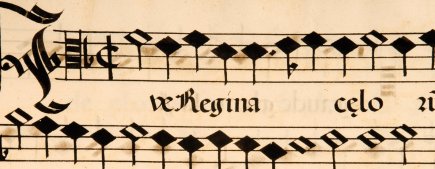
Saint Augustine was an expert on, and lover of, church music. In his book “Confessions”, he describes the effect of church music at the time after being baptised in Milan: “How freely did I weep in thy hymns and canticles; how deeply was I moved by the voices of thy sweet-speaking Church! The voices flowed into my ears (…) and my tears ran down, and I was happy in all these things.”
Our confrère and pioneer of the popular liturgy movement, Pius Parsch, therefore had good reason to consider singing the most essential element of active participation (Parsch, Pius: Volksliturgie, ihr Sinn und Umfang, Klosterneuburg, 1940). According to Pius Parsch, the purpose of singing in church is not limited to cultivating a high art form, but includes leading the people to participate in the holy sacrifice.
This clear statement was confirmed by the Second Vatican Council (1962-65), where it was stated that church music is liturgy rather than just adornment. Thus, it is one of the church’s foremost duties to encourage active participation of the faithful in the service through music. In other words, “The faithful should also be taught to unite themselves interiorly to what the ministers or choir sing, so that by listening to them they may raise their minds to God.” (Sacred Congregation of Rites according to the 2nd Vat. Council, Musicam Sacram: Instruction 15 b).

